Why visit Poland?
In Poland, Chic medieval hot spots like Kraków and Gdaosk compete with energetic Warsaw for your urban attention. Outside the cities, woods, rivers, lakes and hills signal for some fresh- air fun. Poland’s roots go back to the turn of the first millennium, leaving a thousand years of twists and turns and kings and castles to explore. There’s a growing appreciation of the country’s rich Jewish heritage. Beyond the deeply affecting Holocaust memorials, synagogues are being sensitively restored, and former Jewish centers such as Łódź and Lublin have set up heritage trails so you can trace this history at your own pace.
Fabulous medieval castles and evocative ruins dot hilltops elsewhere in the country, and the fantastic red-brick fortresses of the Teutonic Knights stand proudly in the north along the Vistula. At the other extreme, simple but finely crafted wooden churches hide amid the Carpathian hills.
Polish food is based largely on local ingredients like pork, cabbage, mushroom, beetroot and onion, combined simply and honed to perfection. Regional specialties like duck, goose, herring and even bison keep things from getting dull. As for sweets, it’s hard to imagine a more accommodating destination. Cream cakes, apple strudel, pancakes, fruit-filled dumplings and a special national mania for ice cream may have you skipping the main course and jumping straight to the main event.
What does Poland bring in mind?
Łazienki Park
This park is a beautiful place of manicured greens and wild areas. Its popularity extends to families, proud peacocks and fans of classical music who come for the al fresco Chopin concerts on Sunday afternoons from mid- May through September.

|
Białowieża National Park Established in 1921, it is Poland's oldest national park. It is part of a bigger forest known as theBiałowieża Forest, which straddles the border between Poland and Belarus. The national park is famous for two reasons. First, it's the original home of the European bison, the continent's largest land mammal. The park contains several bison breeding reserves, where animals can be viewed living more or less a natural existence. Second, much of the park shelters what is considered Europe's largest swath of original lowland forest, known in Polish as puszcza. Today, Białowieża is a popular weekend destination in summer. People come mainly for the chance to hike, bike and, hopefully, spot a bison. |
 |
Main Market Square
Dating back to the 13 century, the Main Market Square in the Old Town in Kraków is the largest medieval town square in Europe and one of the main tourist attractions in Poland. The square is surrounded by historical townhouses, historic buildings, palaces and churches. The center of the square is dominated by the Cloth Hall, rebuilt in 1555 in the Renaissance style, topped by a beautiful attic.

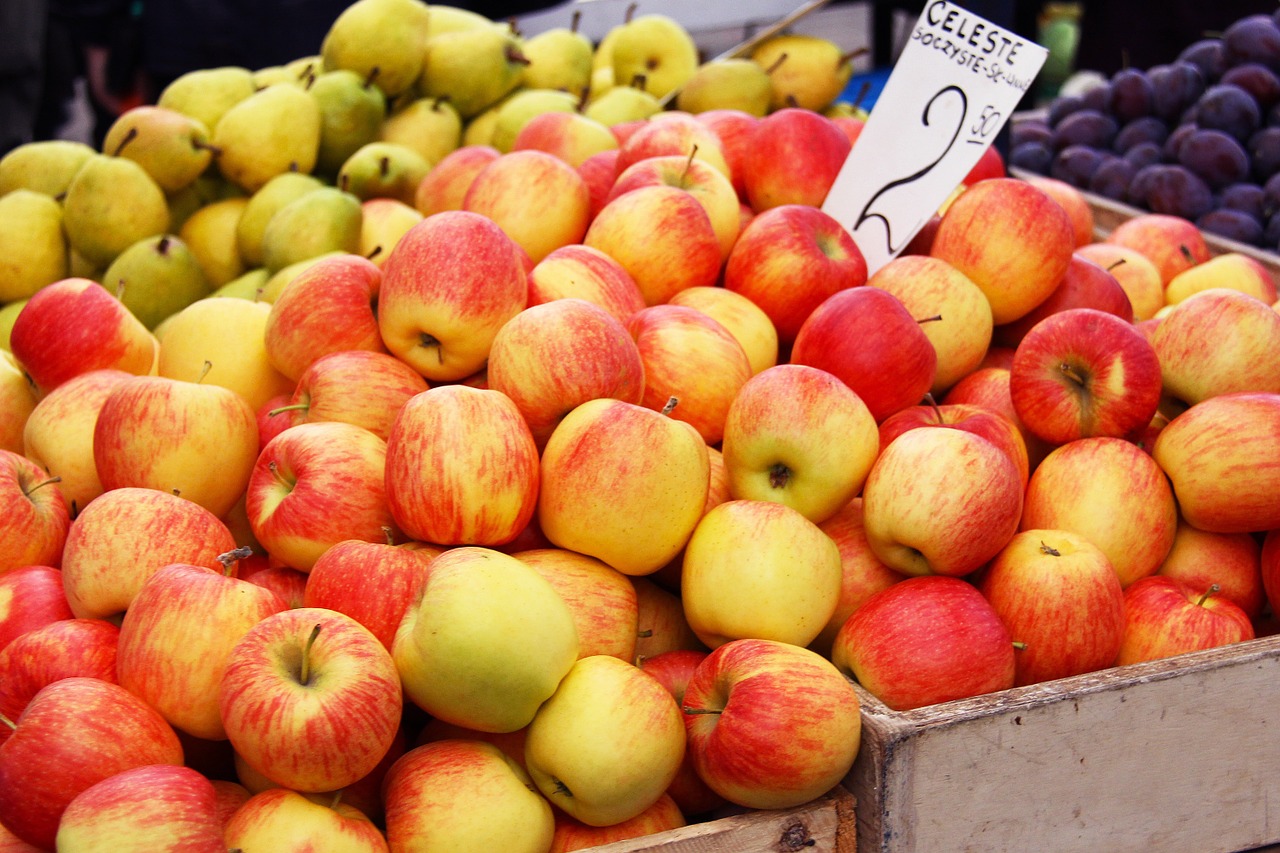 |
Warsaw Old Market Place Founded in the late 13th century, Warsaw and the city’s central marketplace were the heart of Polish culture for five centuries. The original Old Town Market Place was destroyed in World War II but was carefully reconstructed almost immediately after the war ended. The market square features a bronze sculpture of the Warsaw mermaid, the symbol of Poland’s capital. |
Panorama of Racławice
Wrocław’s pride and joy is the giant painting housed in this cylindrical building. The canvas measures 15 m by 114 m, and is wrapped around the internal walls of the rotunda. It’s viewed from an elevated central balcony, and three-dimensional items (tree trunks, plants, weapons and roads); special lighting and sound effects bring it to life.
|
Rynek Główny This vast square is the focus of the Old Town and is Europe's largest medieval town square (200m by 200m). Its most prominent feature is the 15th century town hall tower, which you can climb. |
 |
 |
Karkonosze National Park A 5575-hectare belt that runs along the Polish–Czech border for some 25km. The two main settlements here are the resort towns of Szklarska Poręba and Karpacz. The highest summit of the eastern section is Mt Śnieżka (1602m), while the western portion is topped by Mt Wielki Szyszak (1509m). There are six cirques on the Polish side of the range, the most spectacular being Kocioł Małego Stawu and Kocioł Wielkiego Stawu near Mt Śnieżka, and Śnieżne Kotły at the foot of Mt Wielki Szyszak. The Karkonosze range is known for its harsh climate, with heavy rainfall (snow in winter) and highly variable weather, including strong winds and mists at any time of year. The best chances of good weather are in January, February, May and September. |
Malbork Castle
Malbork’s epic attraction is its massive castle that sits on the banks of the sluggish Nogat River, an eastern arm of the Vistula. The immense castle took shape in stages.

|
Auschwitz-Birkenau A powerful experience that words cannot describe. Devoted to the memory of the murders in the camps during WWII, this immense size of the infamous Nazi concentration camp is the first thing to strike visitors as they approach the entrance to the memorial and museum in Oswiecim, Poland. |
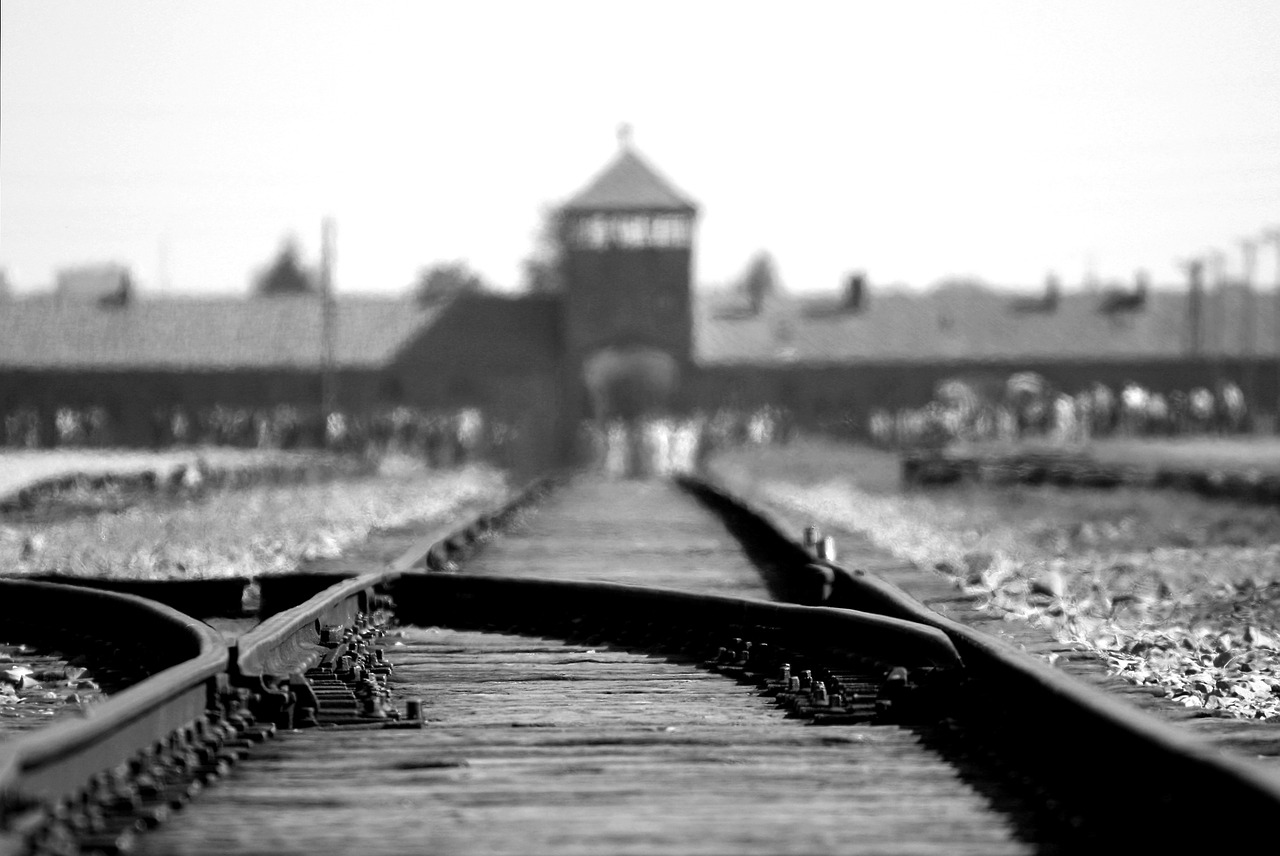 |
Wawel Castle
Built in the 14th century, at the command of Polish monarch Casimir III the Great, the Gothic castle is home to the only preserved piece of the Polish Crown Jewels, the legendary sword Szczerbiec coronation sword. Decorated with symbols and floral patterns, the edge is notched to hold a small shield, giving the sword its nickname, the Jagged Sword.

 |
The Great Masurian Lake The Great Masurian Lake district, east of Olsztyn, is a verdant land of rolling hills dotted with countless lakes, healthy little farms, scattered tracts of forest and small towns. The district is centered on Lake Śniardwy, Poland’s largest lake, and Lake Mamry and its adjacent waters. The lakes are well connected by rivers and canals to form an extensive system of waterways. The whole area has become a prime destination for yachts’ people and canoeists, and is also popular among anglers, hikers, bikers and nature-lovers. Any boating enthusiast worth their (freshwater) salt should make Masuria their first port of call. |
Slowinski Sand Dunes
In northern Poland, the Slowinski Sand Dunes are part of the Slowinski National Park located on the coast of the Baltic Sea. The dunes themselves are formed as waves and wind carry sand onshore and can reach as high as 30 meters. Their forms change with the season and are known as the “moving dunes.”
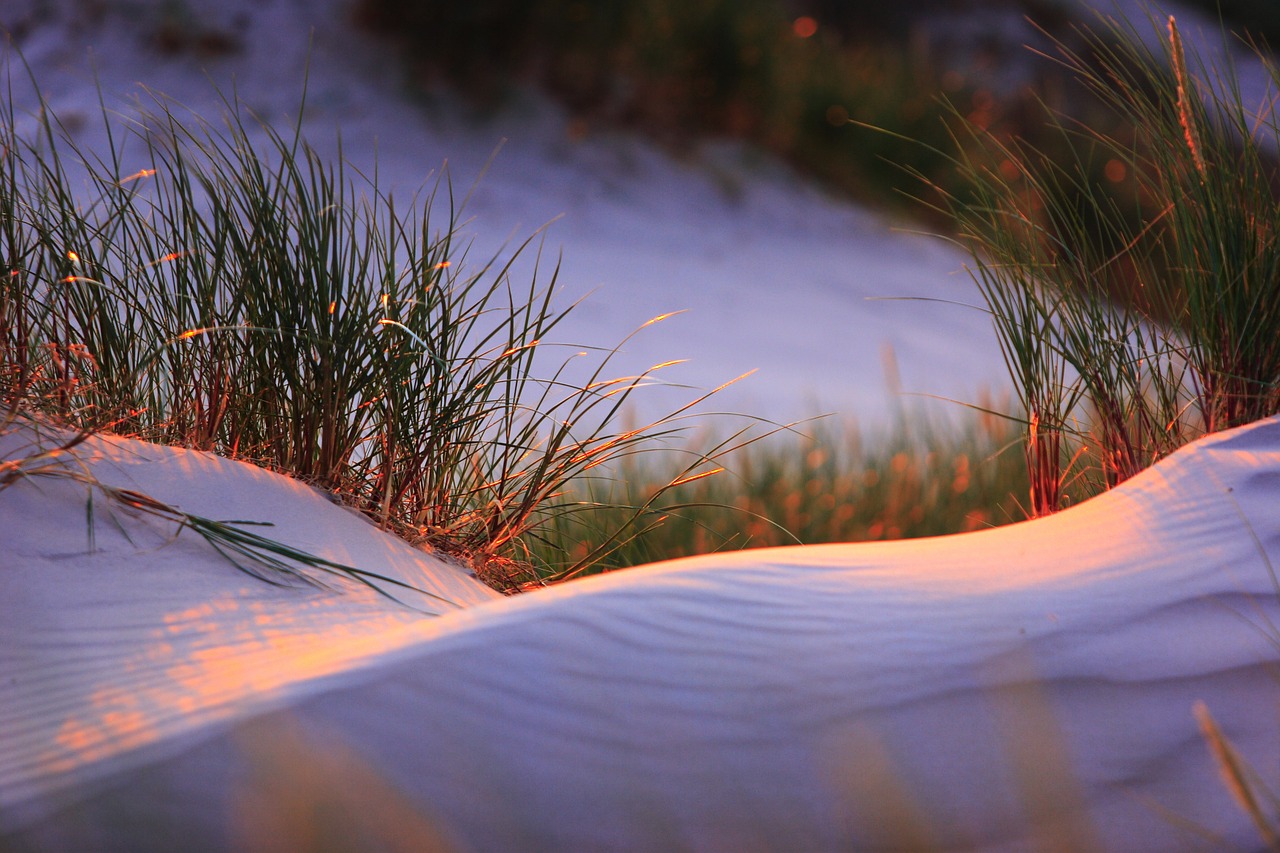
|
Wieliczka Salt Mine Located on the outskirts of Krakow, the Wieliczka Salt Mine is considered one of the oldest companies in the world. Salt has been mined from the site continuously since the 13th century. The site features an underground city, all carved out of the rock salt and a chapel. |
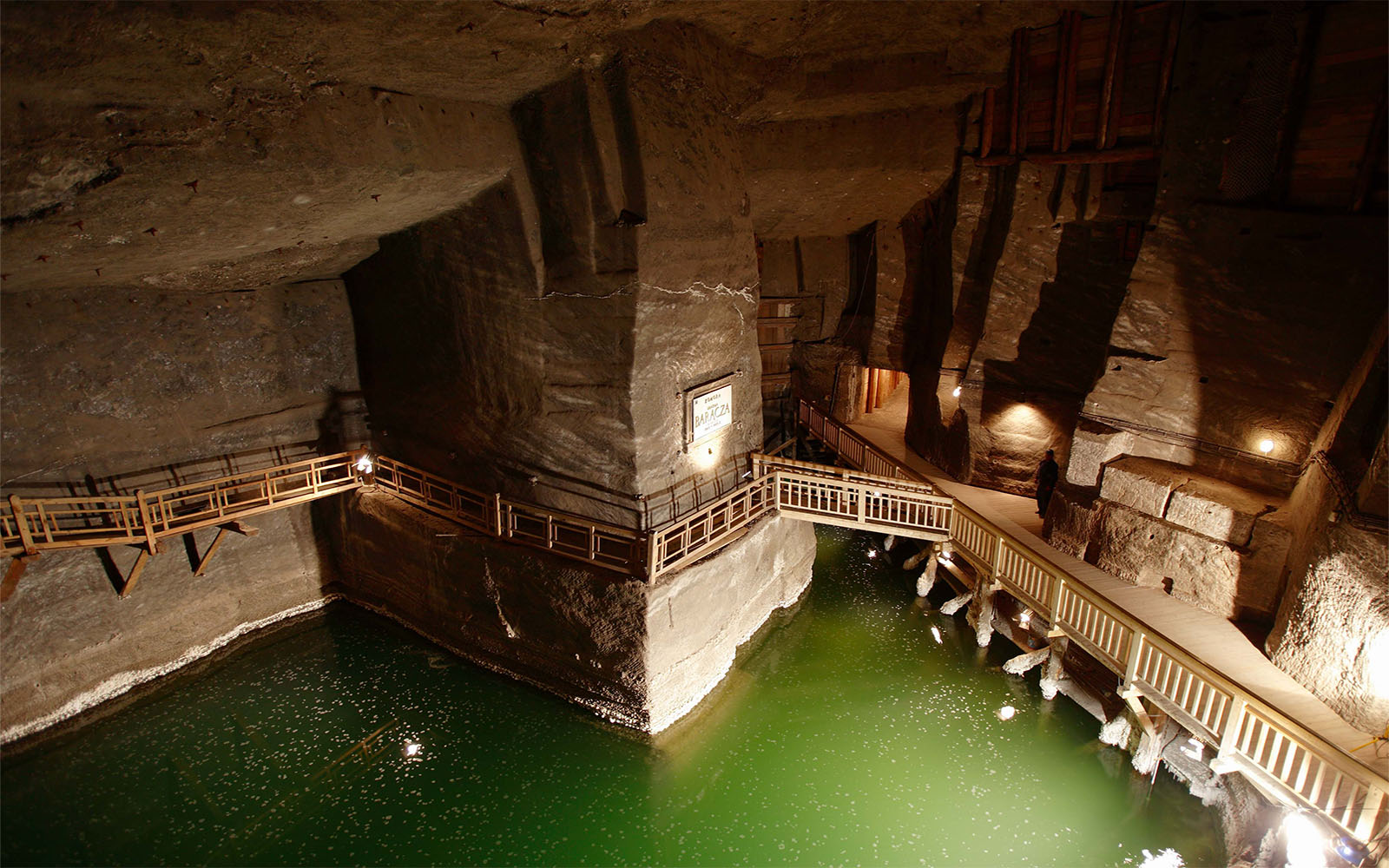 |
Bialowieza Forest
A large relic of the primeval forests that once covered much of Europe, the forest spans the border between Poland and the Republic of Belarus, and there are border crossings for tourists on foot or on bicycles. The Forest is home to 800 wisents, a protected species of European bison. While the wisents are kept within fenced areas, guided tours are available either on foot or in horse-drawn carriages.

Things NOT to miss in Poland
-
Savor the old town charm of central Krakow
-
Get rejected by Face Control (People will tell you this is something that happens in Eastern Europ. If you’re not cool enough to be in the club, they won’t let you in. In Eastern Europe it is called “Face Control”, thus implying that the reason they won’t let you in is because they don’t like your face.)
-
Savor the magnificence of Żubrówka Vodka
-
Dig through the Wieliczka Salt Mines
-
Somberly visit Auschwitz
-
Visit the Sand Dunes
-
Confuse the intricately carved cheese for wooden sculptures
-
Visit Pauline Monastery in Czestochowa The Pauline Monastery on the Jasna Góra Hill is undoubtedly one of the three major Roman Catholic pilgrimage centers across the world.
-
Dunajec River Rafting
-
Walk in Dluga Street: Lined with outstanding Renaissance buildings, outdoor cafes, and shops, the elegant Dluga Street, together with the Long Market, once formed the Royal Route and was inhabited by the city's most prominent figures. Today it is the favorite meeting point of tourists and residents alike.
Best cities of Poland
Warsaw
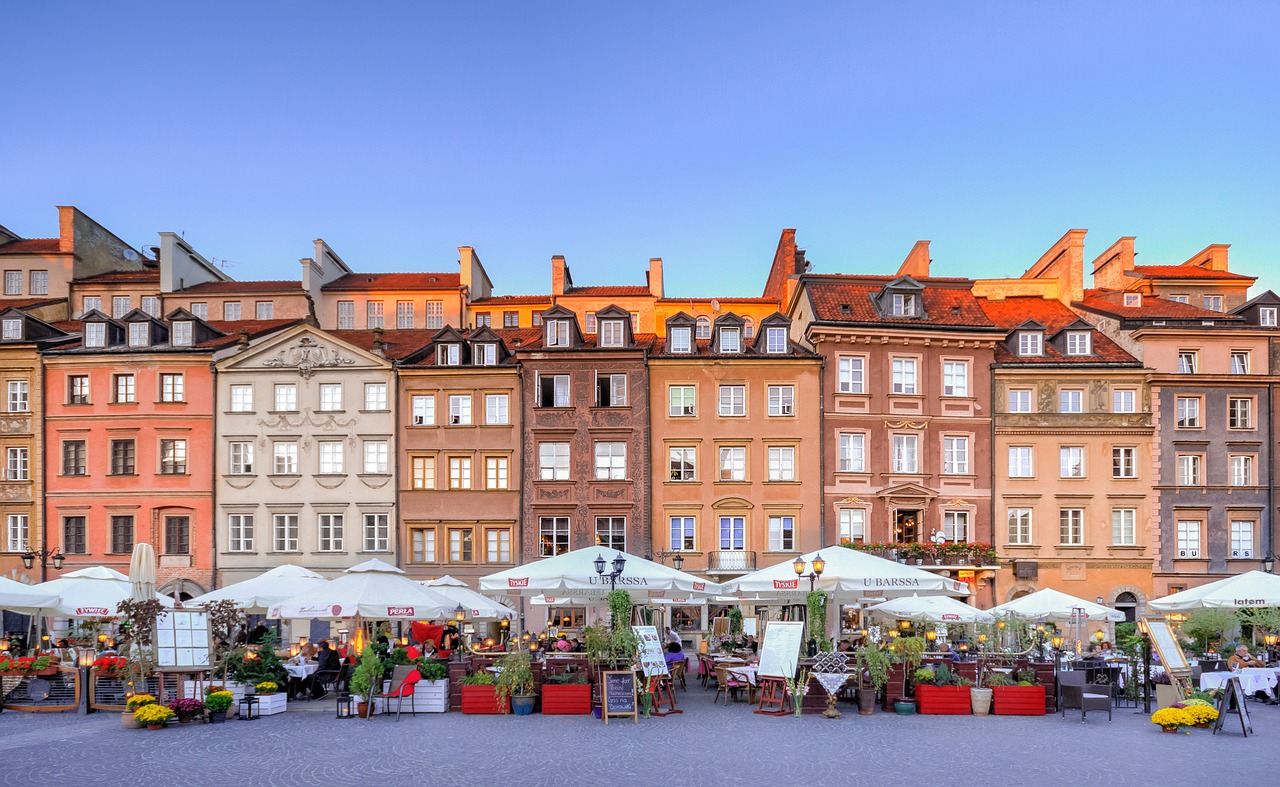
The capital city of Poland is not a city that immediately springs to mind as one of the most beautiful cities in Europe. In fact, on first impression, Warsaw would seem to offer the visitor little: vast areas of concrete socialist era apartment blocks, sky high prices, a fairly chaotic centre, and an Old Town which isn't actually old... But for those who look into a little deeper under the surface, a visit to Warsaw can prove an unforgettable experience.
Kraków

The two places that spring to mind in most people's minds when they think of Poland are Warsaw and Kraków. Kraków, Poland's fourth largest city, is now firmly established as the tourist centre of Poland. During spring and summer, it crowds with tourists from all over the world. Kraków is the most beautiful city in Poland and is thought of as the centre of Polish art and culture and the “Florence of the North”.
Gdansk

Gdansk is located on the Baltic coast and the Polish maritime capital; it has a population of nearly half a million. It is an important centre of economic life, science, culture, and a popular tourist destination. Gdansk is the largest city and capital of the Pomeranian province and an important administration centre.
Wroclaw
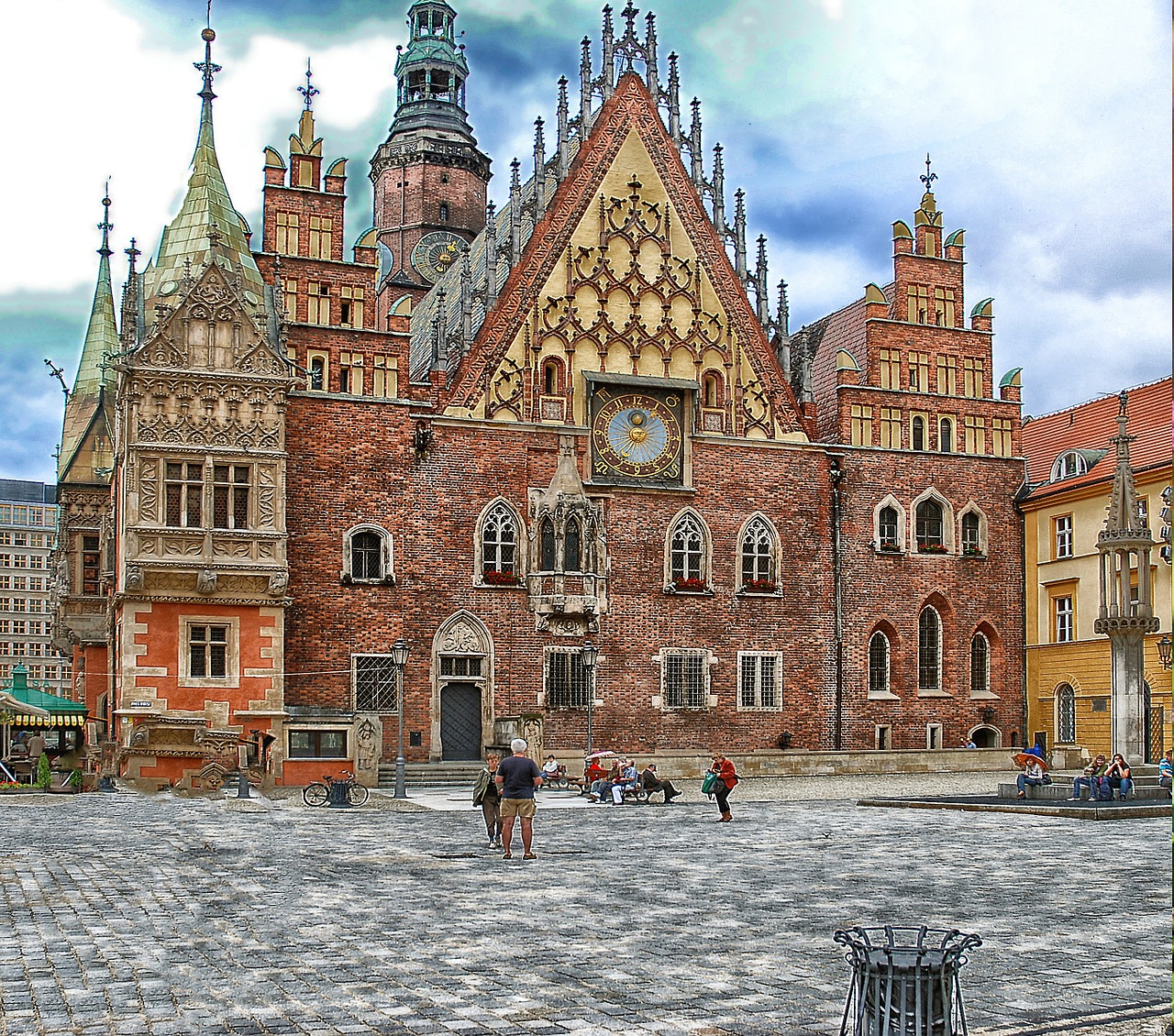
Located on the Oder River, Wroclaw is the largest city in western Poland. Over the centuries, it has been governed by Prussia, Poland, Germany and Bohemia, but has been part of Poland since 1945. The former capital of Silesia is still less well-known as some of the other places to visit in Poland but can definitely compete when it comes to amazing architecture. Main attractions include the market square and the impressive Old Town Hall, St, Elizabeth’s Church with its observation deck overlooking the city, and the largest zoo in Poland. Sailing on the Oder River is a relaxing way to get a feel for this medieval city.
Poznan
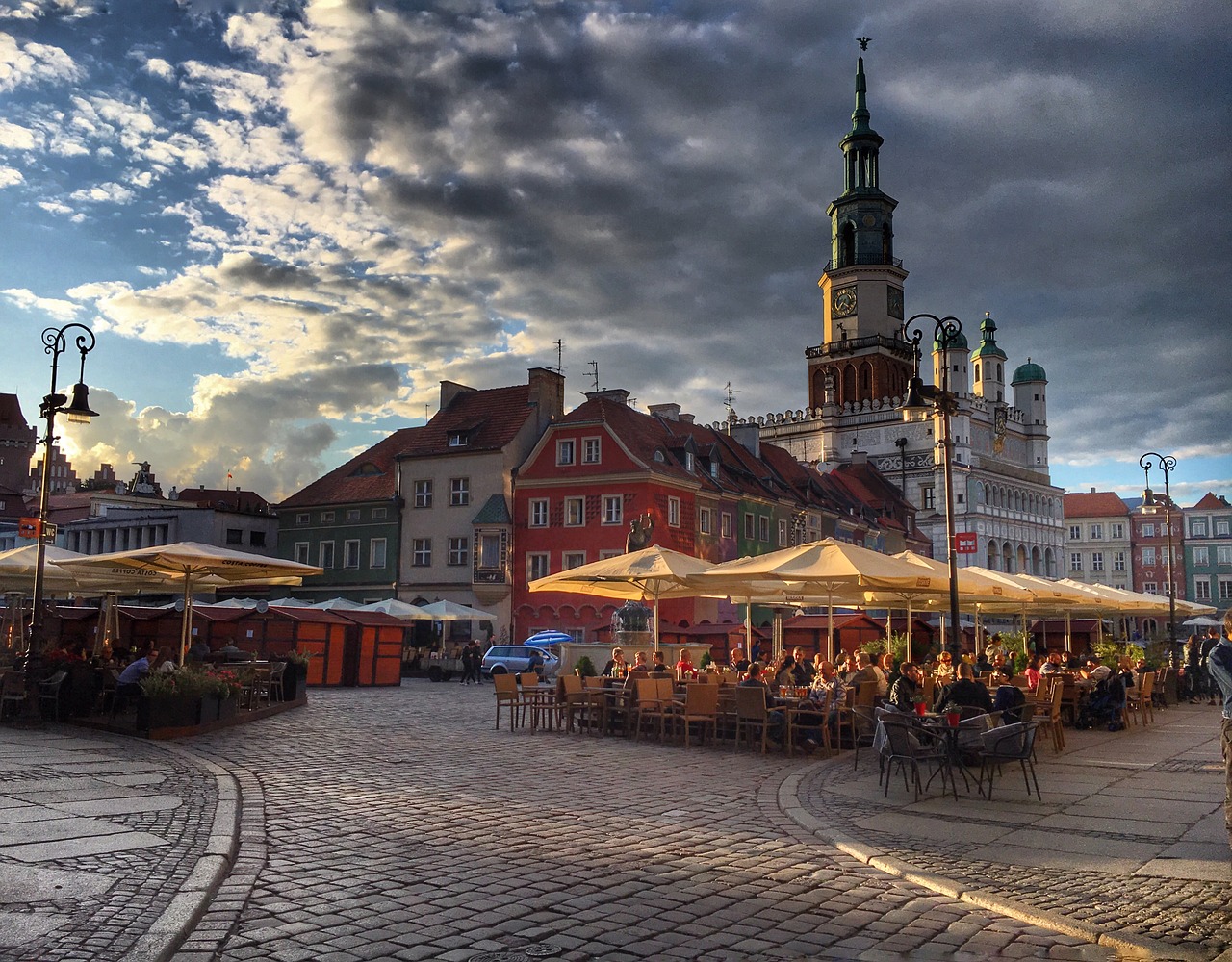
Student travelers wanting to meet their Polish peers might want to visit Poznan, long known as an academic center and home to Poland’s third largest university. The city hosts many international events, including the Malta International Theatre Festival that takes place every summer. Major sites are easily accessible by strolling the Royal-Imperial Route, a walk set up especially for tourists. Athletes may enjoy a visit to the artificial lake of Malta, home to a ski slope, ice rink, and swimming pools.
Culture packages
Entering this website you automatically agree the following terms and conditions even if You are not a registered user of the site. Images shown on the website, country and travel specifications, as well as the webdesignes are subject to copyright protection, Elegant Enterprises are All rights reserved. Prohibited the website all or partial copy, store, use, distribution and sale, without the written consent of the copyright owner of this website (Elegant Enterprises)